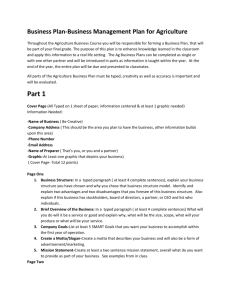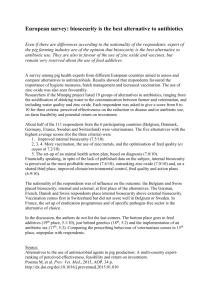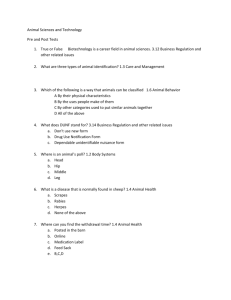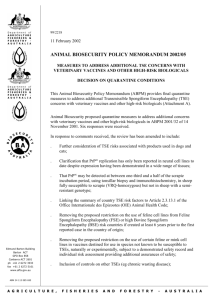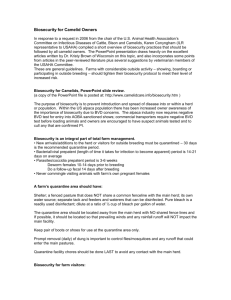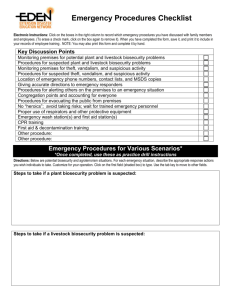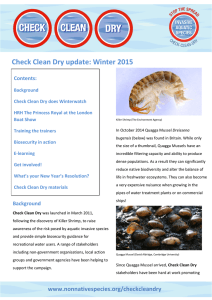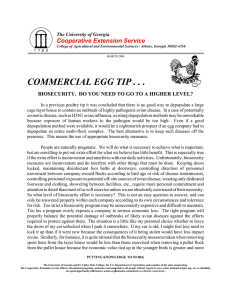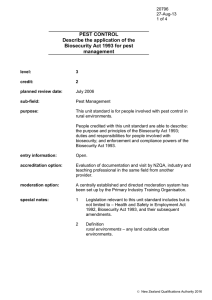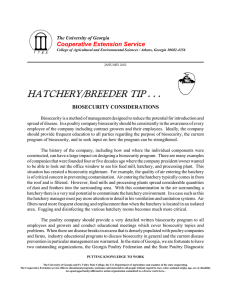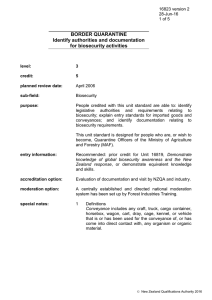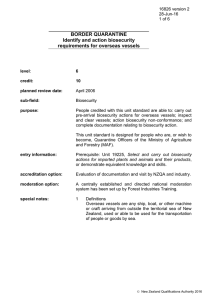Using to understand responses to biosecurity
advertisement
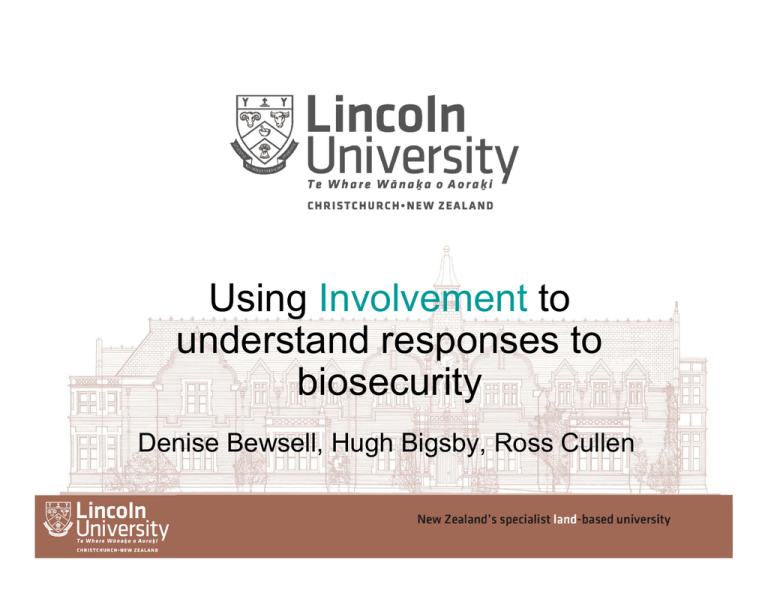
Using Involvement to understand responses to biosecurity Denise Bewsell, Hugh Bigsby, Ross Cullen 1 Involvement • Social psychology • Basis of consumer behaviour theory – Dictates decision making process 2 Involvement • Perception of the importance of a decision relates to level of ‘involvement’ • Has implications for the extent of information processing • Hence has potential to influence behaviour 3 Involvement = f(Person, Object, Situation) Person factors •Importance •Interest Involvement With information Object or stimulus factors Situational factors •Immediacy With the issue Elicitation of counter arguments Effectiveness of information to induce attention Amount of information search Preference for following rules Time spent deliberating From: Zaichkowsky, 1986 4 New Zealand biosecurity system • Comprehensive • Led by MAF • Underpinned by Biosecurity Act (1993) • Issues: – Compliance with requirements – Travellers → focus of this research 5 Methods • Web-based survey, and face to face? • Target audience: individuals in agriculture RC1 and land based industries • Short involvement scale • Validation questions 6 Slide 6 RC1 DO YOU MEAN LINCOLN UNIVERSITY STAFF, CRI STAFF AND PG; ATTENDEES AT SI FIELD DAY? Only the latter are likely to work in agriculture. Ross Cullen, 25/08/2009 Results • Sample: – 46% female, 52% male – 50% 40 years old or younger – 37% dealt with biosecurity at work – 51% travelled once in last 12 months 7 Results • Involvement • Measured using 5 statements – Table 5 near here 8 Results • Involvement Level of involvement Low (5 – 11) Medium (12 – 18) High (19 – 24) Very high (25) % of respondents 2 21 54 23 9 Results • Response to biosecurity – Validating involvement results – Very highly involved respondents felt: • Biosecurity important and seriousness frightening • Each individuals effort is important 10 Response to information Respondents were asked to indicate if they had seen information in the form of: • A brochure/pamphlet on biosecurity • A video shown on board most inbound international aircraft • The notes on the New Zealand passenger arrival card • Amnesty bins • Other information and signs in the international arrivals hall • Detector dogs 11 Response to information • No differences in response to information noted • Differences in rating that information – Arrival card useful – Video changed their mind 12 Involvement in biosecurity = f(Person, Object, Situation) Person factors •Importance of biosecurity •Age Object •Requirement to declare risk goods at the border Situational factors •Travelling into NZ High involvement Involvement With biosecurity information With biosecurity Limited processing of counter arguments Take note of negatively framed information Less information search, once information acquired Follow the rules Little time spent deliberating 13 Conclusion • Highly involved individuals: – Understood NZ biosecurity requirements – Did not need to process more information • Implications: – What happens when biosecurity requirements change? 14
